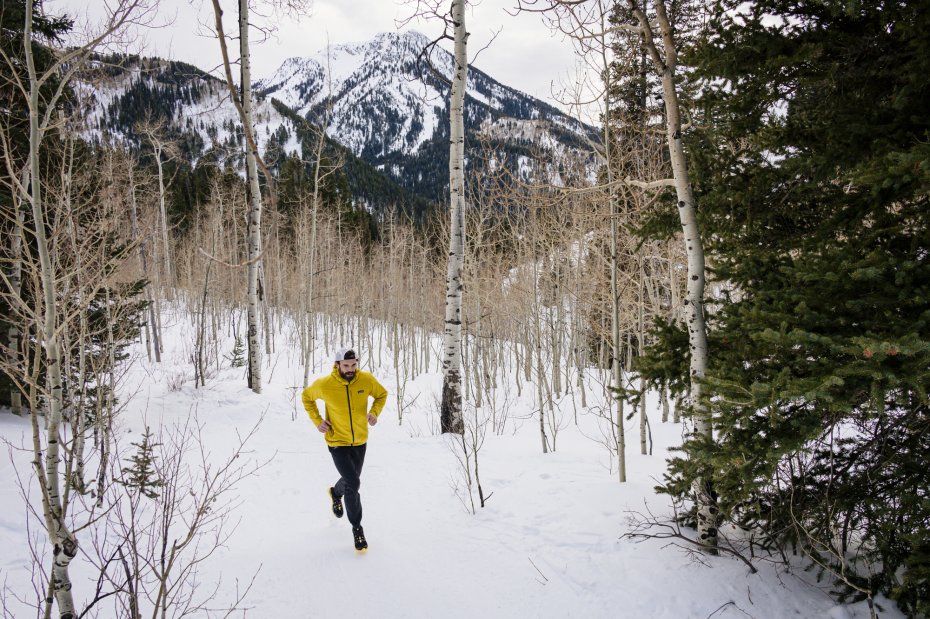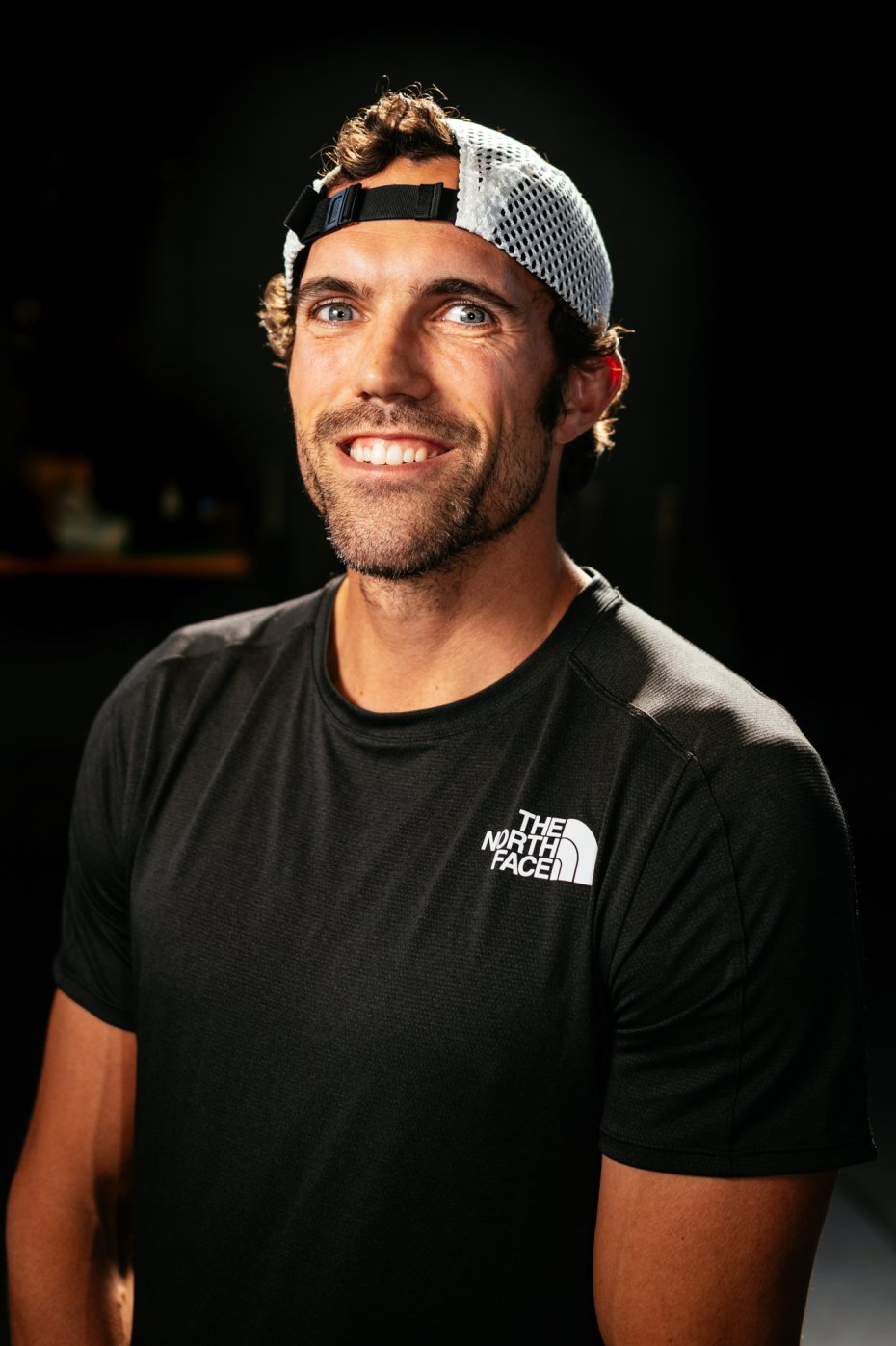4/5/2022 Run Slow to Run Fast: 80/20 Training Plan
By Jimmy Picard, physical therapist, performance coach, and owner of Redefine PT
I clicked off another sub-6-minute mile and slowed to a stop. With my “easy” run complete, I shuffled into the house and promptly crashed on the living room floor. Still dripping sweat, I opened my training log and jotted down the details of the day’s run. Fatigue spread through my body as I lay there too tired to make breakfast.

That summer I was on a mission to get fit. If that pace seems fast for an easy run, that’s because it was. If that thought ever crossed my mind, I don’t recall it. My coach prescribed easy days at 6-6:15 pace. I figured if it felt hard, I needed to get fitter.
Intuitively this approach makes sense. If you want to get faster, you need to run faster. Go a little further each run and see if you can push the pace a little harder. Intervals and tempo runs can give structure to the really hard efforts. But the day-to-day runs should feel like you are still pushing yourself. Right? Plus, it feels good to run hard and work up a sweat. And who doesn’t like setting PR’s on your daily loops or getting on the Strava leaderboard?
But is this behavior really the best approach to getting fast?
The simple answer is no. Or at least not if you want to stay healthy. There is a better way and it’s easier than you might think. Slow down. Train easy most of the time and use hard efforts strategically. Before getting into the details, let’s consider how the human body responds to exercise. It is predictable. Apply a stressor via exercise and the body adapts to better tolerate that stress. For example, running places significant stress on the cardiovascular and muscular systems (and much more). In response, the CV system will become more efficient at pumping and delivering oxygen to working muscles and removing waste. Muscles will get stronger and more efficient propelling the body in the running motion. Tendons improve their elasticity and become better at storing and releasing energy. Lots of changes happen under the hood. By stressing the body with running, it will adapt to better tolerate the demands of running.
I’ve left out one important detail though. In order for the body to adapt, it requires adequate rest between bouts of stress. Recovery allows the body time to absorb the training and adapt. Hard efforts should be followed by easy efforts.
That summer pushing my so-called easy days didn’t end well. I showed up and held my own with the seniors on our first day of practice. However, within weeks, I was sidelined with excruciating back pain and was diagnosed with a sacral stress fracture. I was forced to sit out the rest of the season. I had spent too many days running hard and never gave my body a chance to recover. No wonder I got injured.
So, how should we train?
Let’s first establish a common language by defining various training intensities. I prefer to use the 3 zone system popularized by exercise scientist Dr. Stephen Seiler. From easiest to hardest, zone 1 is considered low-intensity training, zone 2 threshold training, and zone 3 high-intensity training.
The upper limit of zone 1 is determined by your ventilatory threshold 1 (VT1). VT1 is the point at which breathing becomes labored. Below VT1, you are in zone 1 and you can carry on a conversation comfortably. Your breathing is deep and rhythmic but not labored. Think of zone 1 as your easy/normal effort, or 4-6/10 RPE (rate of perceived exertion).
Zone 2 is bookended by VT1 on the lower end and your ventilatory threshold 2 (VT2) on the upper end. VT2 is the point at which breathing becomes labored and above which you are no longer able to speak more than 1-2 words at a time. While running in this zone you can only say 1-3 sentences at a time. This is your moderate to hard efforts. Some coaches refer to this as tempo or steady-state efforts or a 7-8/10 RPE.
Zone 3 or high-intensity, is anything above VT2. Training at this intensity you can only mutter a single word at a time. This is your hard interval sessions, typically 1-3 minutes bouts, or 9-10/10 on the RPE scale.
With intensity zones established we can discuss how to best distribute our training. In numerous research articles, Dr. Sieler has studied the training habits of elite endurance athletes. What he found is clear. Across all endurance sports, elites spend 80% of their time training at low intensity (zone 1) and only 20% at moderate to high intensity (zones 2-3). Some refer to this as the 80/20 rule or polarized training. Interestingly, he went on to find that amateur athletes gravitate toward a 50/50 split, spending only 50% of their time exercising at a lower intensity. You might be thinking what’s wrong with that? Why not spend more time running at a higher intensity? That’s how I was thinking while training in college spending all my time in zones 2 and 3.
In a study published in the International Journal of Sports Physiology and Performance, Dr. Seiler went on to answer that question by directly comparing these two strategies. He took a group of sub-elite level runners and split them into two groups. The first group trained like the elites using the 80/20 distribution. The second group trained how most of us train, with a 50/50 split. The goal was to see which training strategy resulted in the best performance outcome.
At the start of the study, each runner performed a 10k time trial. Five months later, to access performance improvements, they repeated the 10k. The results? Both groups improved. But the 80/20 group showed an average improvement of almost 2mins. The 50/50 group improved by only 1:24. Still pretty good. But the runners who most closely followed the 80/20 guidelines and were especially diligent about it, showed the greatest improvements, cutting an average of 2:45 off their 10k times!
Similar studies have validated the 80/20 approach.

So, why do so many people continue to train as I did back in college? Two reasons stand out to me, ego and ignorance. I’ll admit I often get embarrassed to run slow. I worry about what other people think and fear their judgment. I imagine others looking at my Strava and laughing at the slow paces on easy days. And so I find my paces creeping faster and faster to prove to others that I’m fit. How ridiculous.
Others simply don’t understand the value of running easy or don’t know what running easy means. The value of easy runs is that they support the hard days. Easy days allow you to recover from the hard session. They leave you feeling fresh and ready for the next hard sessions. Easy runs stimulate the body to become more aerobically efficient encouraging numerous positive adaptations including increased mitochondria and capillary density. All these benefits come with a lower risk of injury compared to training at higher intensities. By running hard, or even moderately hard, on easy days you are not allowing your body to recover. Instead, you are in a constant state of low-level fatigue, too drained to give it your all on the hard days.
It is important to note that while I stress the importance of low-intensity training, the remaining 20% of training (at threshold to high-intensity training) is equally, if not more, important. These sessions push the body to further build fitness upon the foundation laid by the low-intensity training. The easy session will only get you so far. High-intensity training pushes you mentally and physically to tolerate harder efforts. I will discuss this in further detail in a future blog but keep in mind that if you only train in zone 1, your fitness will quickly plateau without the high-intensity efforts.
Practical plan:
The 80/20 rule is easy to implement. First, determine how much time you can devote to training each week and the number of sessions per week you have available. Next split the total time 80/20. It’s common to split the 20% hard efforts across 2 sessions. The 80% easy will get spread out across your remaining available sessions and factored into warm-ups and cool-downs on the hard days.
For example, let’s use a 10 hour training week with 6 training sessions. As you plan out your week, immediately commit 8 hours to low-intensity training efforts and 2 hours for moderate to high-intensity training. We will have 2 hard sessions and 4 easy sessions. The hard workouts will likely have a 20min warmup and cooldown each, accounting for 1hr 20mins easy training, leaving 6hrs 40mins to get spread across the 4 easy days. Below is a breakdown of this hypothetical week of training.
On easy days, plan to train solo or with a partner who understands that you plan to take this day easy. Group training can push us too hard and tends to turn an easy day into a moderate or hard effort. Save those for the remaining 2 hours of hard training. During those 2 hours consider tempo efforts and faster intervals. A coach comes in handy here to help tailor your training to your specific goals. But keep it simple, 80% of your weekly training should be easy, 20% moderate to hard. Following this formula fitness will improve and your risk of injury will decrease.
I look back on my college running career with some regret. Those four years were riddled with injuries. A full 50% of it was spent sidelined. Pushing my easy runs, no doubt played a major role in those injuries. I can only wonder what things would have been like had I had the courage or instruction to slow down.
Nowadays my training, and that of the athletes I coach, looks much different compared to my college days. The focus is first on finding joy in and embracing the easy days. Once that’s become second nature we start hitting the hard days hard. I’ve seen a dramatic reduction in overuse injuries as well as steady performance improvements. Give it a try.
------------
 Jimmy Picard is a SLC-based physical therapist and performance coach who opened Redefine PT to specifically treat runners, skiers, and other mountain athletes. Through this work, he elevates athletes to perform at their peak. Personally, he has competed in races such as Run Rabbit Run 100, Speedgoat 50k, Power of Four, Wasatch Powderkeg, and Crowbar. Check out his work at https://redefine-pt.com/ and on Instagram at @redefinephysio. If you want help training for a race or need to recover from a nagging injury, feel free to reach out.
Jimmy Picard is a SLC-based physical therapist and performance coach who opened Redefine PT to specifically treat runners, skiers, and other mountain athletes. Through this work, he elevates athletes to perform at their peak. Personally, he has competed in races such as Run Rabbit Run 100, Speedgoat 50k, Power of Four, Wasatch Powderkeg, and Crowbar. Check out his work at https://redefine-pt.com/ and on Instagram at @redefinephysio. If you want help training for a race or need to recover from a nagging injury, feel free to reach out.
Comments

4/6/2022
2022 SkyRun Season Preview







